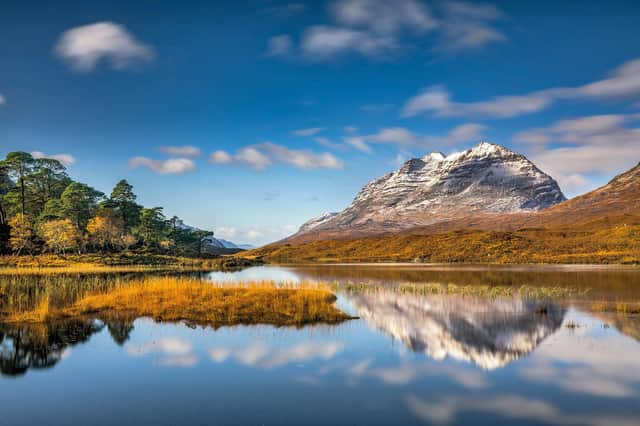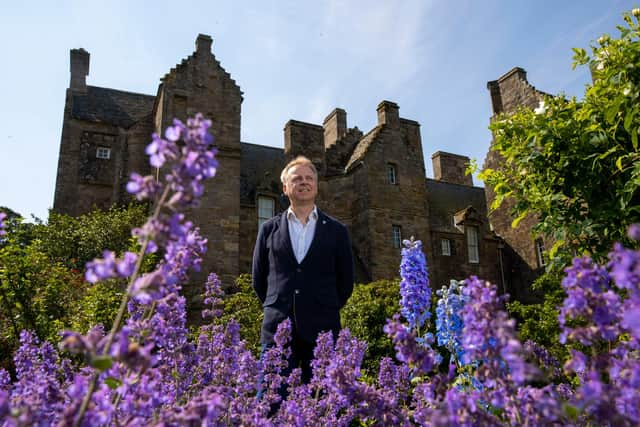National Trust for Scotland has been taken for granted, but we hold so much that is important


The one escape that people could count on, even at the pandemic’s height, was access (if permissible) to open
landscapes and places of beauty, and we can see now that yearning for the solace of places like Torridon and Ben
Advertisement
Hide AdAdvertisement
Hide AdLawers is undiminished and has grown. Many walkers and campers may not realise that their freedom to enjoy such


places depends substantially on the National Trut for Scotland, a charity which this year celebrates its 90th anniversary, or that this organisation was itself at a critical point in its history a few short months ago.
I took on the role of Chief Executive at the beginning of July 2020. It wasn’t the easiest start, and an immensely difficult time for a team driven by the great cause the Trust represents. The first lockdown imposed in March had stopped many of the charity’s funding sources. This bleak, unprecedented and unpredictable situation demanded urgent actions that were equally as tough, reducing costs by curtailing spending and, regrettably and painfully, involving a programme of redundancy.
The fact that the Trust is in a better place now, climbing towards recovery or, if need be, able to weather more
storms, is due to the extraordinary loyalty of our membership, the great majority of whom stayed, and to the
generous donors who gave £3.5 million to our emergency appeal. This generosity was more than matched by the
Scottish Government which granted us £3.8 million of vital support.
Uncertainties remain, but the Trust is proving its resilience and in its 90 th year we are as hopeful as its founders must
Advertisement
Hide AdAdvertisement
Hide Adhave been in its first. A convivial discussion hosted by Sir John Stirling Maxwell in Glasgow’s Pollok House in 1931 led
to an independent National Trust for Scotland established as a “A cabinet” into which the nation “can put some of its
valuable things, where they will be perfectly safe for all time, and where they are open to be seen and enjoyed by
everyone.” Birthdays are a time for looking back with pride at achievements and, as we are doing, looking forward
to the future.
It’s my honest opinion that the Trust has often been taken for granted, like those other things we’ve reappraised
when they were denied to us, in the last year notably our arts and wider culture. In this time of reflection, we can
allow ourselves a modicum of appreciation. The Trust is a charity, recent welcome support notwithstanding, that
has rarely called upon taxpayers’ support. Despite that, the nation benefits from the conservation, protection of
Advertisement
Hide AdAdvertisement
Hide Adand access to some of the most beautiful and meaningful places that Scotland has and which define understanding
of our country at home and abroad.
From the beginning, the Trust acquired places that are now so synonymous with our history and culture (and so vital
to our leisure and tourism), we now can scarcely believe that some faced existential threats. Gladstone’s Land on the
Royal Mile was to be demolished; Bannockburn was on the verge of being swallowed by urban sprawl; the very last
remnants of the Caledonian pinewoods were passing into memory on the Mar Lodge Estate; the human legacy
imbued in the landscape of St Kilda was at the mercy of time and tide.
These are just a few of the Trust’s properties and together they encompass 245 miles of mountain footpaths, 10,000
archaeological sites, 300,000 precious objects and works of art, 100 historic buildings and eight National Nature
Reserves.
Advertisement
Hide AdAdvertisement
Hide AdThe Trust has become the safe place envisaged by Stirling Maxwell, who surely would have approved of
the donation to it of the isle of Canna in support of its island community, its precious environment, and its priceless
archive documenting Gaelic culture. The land we hold and care for in trust is equal in area to all of Scotland’s cities
combined – it’s arguable that our role in providing public access to the countryside ensured that there was a ‘right to
roam’ decades before it came to pass.
The sheer variety and scale of our portfolio means it can be hard to grasp the magnitude of the Trust’s
responsibilities, but that is its wonder; the Trust is exceptional as an independent charity (free to speak out) in
Scotland in caring for the built and the natural, the future of both of which is substantially in human hands.
A factor that bonds the Trust’s responsibilities is people and our shared heritage. Sir John’s ‘cabinet’ was never intended to
Advertisement
Hide AdAdvertisement
Hide Adbe locked. It is our responsibility to ensure as many as possible enjoy our places and the connected human stories of Scotland and its people (wherever from) to help us understand and learn from the past.
We’re now taking time to think about what the Trust needs to do and be by the time of its centenary in 2031. Our
purpose of care and access will always be at the heart, and in the short-term we need to complete our recovery, deal
with the conservation work brought to a halt by COVID, and plan for future investment in our estate. Beyond that I
hope we can be more ambitious in connecting people and communities with nature and involving them in the
mitigation of climate change, that we can encourage interest among many more in exploring our shared and diverse
heritage, and that our portfolio expands beyond the incomparable Hill House to cover more aspects of the exciting
and vital culture of Scotland in the 20 th century.
None of this is possible without our members, donors and thousands of wonderful volunteers. We invite you to join
them in helping the Trust care
Advertisement
Hide AdAdvertisement
Hide AdPhil Long, Chief Executive of the National Trust for Scotland
A message from the Editor:
Thank you for reading this article. We're more reliant on your support than ever as the shift in consumer habits brought about by Coronavirus impacts our advertisers.
If you haven't already, please consider supporting our trusted, fact-checked journalism by taking out a digital subscription.
Comments
Want to join the conversation? Please or to comment on this article.